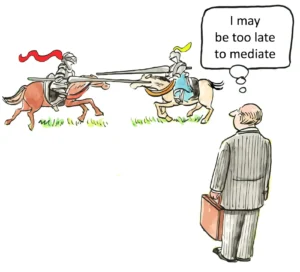Regulatory Review Process: How DOGE Team Leads Are Reshaping Agency Rules
The regulatory review process in the United States has always reflected the priorities of the administration in power, but the arrival of the Department of Government Efficiency-DOGE-has fundamentally altered the landscape. The question of how DOGE Team Leads are reshaping agency rules is not merely one of bureaucratic mechanics; it is a story of executive ambition, legal boundaries, and the future of the administrative state. For attorneys, agency officials, and regulated industries, understanding this transformation is essential to navigating the new era of federal governance.
At the heart of the current regulatory transformation is the executive order mandating that agency heads, in close coordination with their DOGE Team Leads and the Director of the Office of Management and Budget (OMB), must initiate a sweeping review of all regulations under their jurisdiction. The goal is to ensure consistency with both the law and the administration’s policy objectives. This directive is not a mere suggestion. It is a binding mandate, and the consequences for agencies and regulated parties are profound.
The DOGE Team Lead is now a pivotal figure in every federal agency. These team leads are not simply liaisons; they are embedded decision-makers, often with backgrounds in law, engineering, human resources, and technology. Their charge is to scrutinize existing rules, identify those that are unlawful, unconstitutional, or inconsistent with the administration’s agenda, and recommend rescission or modification. They also play a critical role in reviewing new rules before they are submitted to the Office of Information and Regulatory Affairs (OIRA), ensuring that every regulatory action aligns with the priorities set forth by the President and the DOGE agenda.
The process begins with a 60-day review window. During this period, agency heads and their DOGE Team Leads must classify regulations into several categories: those that raise constitutional concerns, those based on unlawful delegations of legislative power, those lacking statutory authority, those imposing significant costs without commensurate public benefit, and those harming national interests or burdening small businesses. This classification is not simply academic; it sets the stage for a Unified Regulatory Agenda, developed in consultation with OIRA, that will determine which rules are rescinded, modified, or left untouched.
This new regulatory review process has several immediate effects. First, it places unprecedented power in the hands of DOGE Team Leads, who now serve as gatekeepers for both the survival of existing regulations and the promulgation of new ones. Second, it introduces a new layer of review that can, and often does, slow the pace of rulemaking. The additional scrutiny may delay the issuance of new rules, especially discretionary ones, as DOGE teams conduct their own evaluations before OIRA even begins its review. This can create bottlenecks, particularly if DOGE decides to review every rule independently rather than focusing on a subset of high-impact regulations.
The legal aspects of this process are complex and, in some cases, untested. The executive orders establishing DOGE and its teams have been challenged in court, with plaintiffs arguing that DOGE wields executive power beyond what is permitted by statute or the Constitution. Critics contend that DOGE’s role in reviewing, modifying, or terminating agency rules and contracts amounts to an unconstitutional delegation of authority. Supporters counter that the President has broad discretion to direct the operations of the executive branch, including the power to reorganize agencies and set regulatory priorities.
One of the most controversial features of the DOGE-driven regulatory review is its impact on agency contracting. Before entering into new contracts or modifying existing ones, agency heads must consult with their DOGE Team Lead and issue guidance to promote government efficiency and align with administration policy. This requirement has led to delays in contract awards and modifications, as agencies must first complete a comprehensive review of their contracting policies, procedures, and personnel. During this review period, agencies are effectively at a standstill, unable to proceed with new contracts or significant modifications to existing ones.
For government contractors and grant recipients, this new reality demands vigilance and adaptability. Programs may receive stop-work orders or be terminated for the government’s convenience, and payment delays are likely as agencies implement new written justification systems for every payment. Contractors must document costs meticulously and be prepared for negotiations over termination settlements, which are allowable costs under the Federal Acquisition Regulation (FAR). Legal counsel becomes indispensable for navigating these challenges and ensuring that contractors’ rights and obligations are protected.
The DOGE Team Lead also plays a central role in agency personnel decisions. New career appointments at each agency are made in consultation with the DOGE Team Lead, who provides monthly hiring reports to the USDS administrator. This gives DOGE significant influence over the composition of the federal workforce, with the power to veto hires and shape the direction of agency staffing. The implications for agency culture and independence are significant, as DOGE-aligned personnel are likely to prioritize efficiency and adherence to the administration’s agenda over other considerations.
From a broader perspective, the DOGE initiative is part of a larger effort to make the federal bureaucracy more responsive to the elected president. Proponents argue that unelected bureaucrats have too much power and that the executive branch should be more directly accountable to the voters. Critics warn that this approach risks politicizing the civil service and undermining the expertise and continuity that are hallmarks of effective governance.
The legal challenges to DOGE’s authority are ongoing. Plaintiffs have argued that DOGE is an agency subject to the Freedom of Information Act (FOIA) and the Federal Records Act (FRA), and that its refusal to comply with transparency requirements violates federal law. The administration maintains that DOGE is merely an advisory body, not an agency, and thus is not subject to these statutes. However, evidence has emerged that DOGE is exercising operational control over agencies, making decisions that go beyond mere advice. Courts will ultimately decide whether DOGE’s actions are lawful and whether it must comply with transparency and accountability requirements.
Transparency is a recurring theme in the debate over DOGE. As DOGE teams become more involved in agency decision-making, questions arise about whether their meetings and records should be open to public scrutiny. The Federal Advisory Committee Act (FACA) contains provisions to ensure that advisory committees are balanced and independent, but DOGE’s composition and operations may not meet these standards. Lawsuits have been filed challenging DOGE’s compliance with FACA and seeking to enjoin its activities until it complies with transparency requirements.
The impact on regulated industries is profound. The administration’s deregulatory agenda, implemented through DOGE, is aimed at eliminating what it sees as unnecessary or harmful regulations. This includes rules affecting technological innovation, energy production, workplace safety, and more. For some, this is a welcome relief from regulatory burdens that stifle growth and innovation. For others, it raises concerns about the loss of protections that safeguard public health, safety, and the environment.
The process for rescinding or modifying regulations is now more accessible to industry stakeholders. The executive order encourages companies, industry groups, and other stakeholders to highlight regulations they believe should be rescinded or modified. This creates opportunities for advocacy but also introduces uncertainty, as the fate of many regulations now hinges on the priorities of DOGE teams and the administration.
The DOGE Team Lead is also responsible for reporting on agency contracting activities, including payment justifications once new systems are implemented. This level of oversight is unprecedented and reflects the administration’s commitment to rooting out waste, fraud, and abuse. However, it also introduces new administrative burdens and the potential for delays as agencies adjust to the new requirements.
The technological dimension of the DOGE initiative is significant. The USDS, now renamed the United States DOGE Service, has been tasked with a Software Modernization Initiative to improve the quality and efficiency of government-wide software, network infrastructure, and information technology systems. Priorities include interoperability between agencies, data integrity, and responsible data collection. Agency heads are required to ensure that DOGE has full and prompt access to all unclassified agency records, software systems, and IT systems. This access is essential for DOGE teams to carry out their mandate but has raised concerns about privacy, cybersecurity, and the potential for unauthorized access to sensitive information.
Privacy advocates and legal experts have expressed alarm at DOGE’s access to federal databases, particularly those containing taxpayer information and payment systems. The risk of unauthorized access or accidental disruption of critical systems is real, and the legal framework governing access to these systems is complex. Federal law imposes strict requirements on who can access certain types of data, and the process for granting access is typically rigorous. The rapid implementation of DOGE’s agenda has tested these safeguards and prompted legal challenges alleging violations of privacy and cybersecurity laws.
The political context of the DOGE initiative cannot be ignored. The administration’s deregulatory push is part of a broader effort to dismantle what it sees as a “woke and weaponized” bureaucracy. The goal is to make the federal government more efficient, responsive, and aligned with the President’s policy objectives. This has led to significant layoffs, agency closures, and the rapid repeal or suspension of decades-old regulations. For supporters, this is a necessary correction to decades of regulatory overreach. For critics, it is a dangerous experiment that risks undermining the stability and effectiveness of the federal government.
The DOGE regulatory review process also intersects with ongoing debates over the scope of executive power. The President’s authority to direct the operations of the executive branch is broad, but not unlimited. The courts will play a crucial role in determining the boundaries of this authority, particularly as lawsuits challenging DOGE’s actions move forward. The outcome of these cases will have far-reaching implications for the balance of power between the President, Congress, and the federal bureaucracy.
For attorneys advising clients affected by the new regulatory regime, the key is to stay informed and engaged. The pace of change is rapid, and the legal landscape is evolving. Contractors, grantees, and regulated entities must be proactive in monitoring developments, advocating for their interests, and ensuring compliance with new requirements. Legal counsel should be prepared to assist clients in navigating the complexities of contract modifications, payment delays, and regulatory uncertainty.
The DOGE Team Lead is now a central figure in the regulatory process, with the power to shape the future of agency rules. Their influence extends to every aspect of agency operations, from rulemaking and contracting to personnel and technology. The success or failure of the DOGE initiative will depend on the ability of these team leads to balance the demands of efficiency, accountability, and legal compliance.
In the end, the regulatory review process under DOGE is a test of the American administrative state. It is a test of whether the federal government can be made more efficient and responsive without sacrificing transparency, accountability, or the rule of law. It is a test of whether the balance of power between the executive and the bureaucracy can be recalibrated in a way that serves the public interest.
The story of how DOGE Team Leads are reshaping agency rules is still being written. The coming months and years will reveal whether this bold experiment succeeds in achieving its goals or whether it becomes another cautionary tale of executive overreach. For now, those who operate in the world of federal regulation must adapt to a new reality-one in which the DOGE Team Lead is both gatekeeper and guide, and the rules of the game are being rewritten in real time.
Citations:
- Analysis of DOGE’s Impact on Healthcare Rulemaking and Oversight
- Department of Government Efficiency Overview and Structure
- Executive Order on DOGE: Major Federal Cost Efficiency Changes
- DOGE Has Arrived: Gibson Dunn Legal Analysis
- Inside Trump’s Plan to Halt Hundreds of Federal Regulations
- NPR Explainer: Department of Government Efficiency and Elon Musk
- DOGE’s Agency Status and Legal Accountability
- Lawfare: DOGE Directives and Department of Justice Implications
- Trump Issues DOGE Executive Order on Agency Regulation Rescission
- DOGE’s Influence on Treasury, USAID, and Federal Agencies
- Can DOGE Dodge Federal Transparency Laws?
- Ensuring Lawful Governance and Implementing DOGE
- Semantic Scholar: Research on DOGE Regulatory Impact
- PMC Article: Government Efficiency and Regulatory Reform
- White House Action: Implementing the DOGE Regulatory Initiative
- White House Order: Establishing the Department of Government Efficiency
- DOD Contracting Review in the Age of DOGE and Musk
- Congressional Research: DOGE and Regulatory Policy
- Deregulatory Review Executive Order and Government Contracting
- NPR: DOGE, Musk, and Trump’s First 100 Days
- How Trump’s DOGE Could Affect the FDA
- Executive Order on DOGE Workforce Optimization
- POGO: Structural Issues with DOGE
- White House Action: DOGE Workforce Optimization Initiative
- Chertoff Group: DOGE’s Impact on Government Contractors
- Federal Register: Ensuring Lawful Governance and DOGE Implementation
- JD Supra: Trump’s Deregulatory Push and DOGE
- Judge Rules DOGE’s Dismantling of USAID Unconstitutional
- Reuters: Musk’s DOGE Uses AI to Monitor Federal Workers
- Executive Order on DOGE: Major Federal Cost Efficiency Changes
- DOGE Payment Tracking Systems and Trump Order
- Elon Musk’s Government Dismantling Efforts and Opposition
- OPB: DOGE, Trump, and the Administration’s First 100 Days
- DOGE’s Access to Personal Information Prompts Legal Challenges
- House Budget Committee Fact Sheet: So-Called DOGE
- PMC Article: Government Efficiency and Regulatory Review
- PMC Article: Regulatory Efficiency and Public Policy
- The Regulatory Review: DOGE as a Wakeup Call for Economists and Attorneys
- NPR: DOGE, NLRB, and SpaceX Security
- DOGE Has Arrived: Gibson Dunn Legal Analysis
- DOGE Requests SEC Staff Efficiency Ideas, Promises Anonymity
- BBC News: DOGE’s Role in Government Efficiency
- POGO Investigation: DOGE Team Vetting and Ethics Concerns
- National Law Review: Trump Administration’s Deregulatory Push
- Reuters: Musk’s DOGE Team Granted Government Data Access
- Becker’s Hospital Review: Attorneys General Sue Over DOGE Data Access
- Reporters Committee: Pre-Publication Review Guide
- WUSF: DOGE Employees Gain Access to Classified Nuclear Networks
- National Law Review: Whistleblower Alleges Data Breach Risks at NLRB
- Semantic Scholar: Analysis of DOGE Regulatory Policy
- PMC Article: Government Efficiency and Public Health
- Semantic Scholar: Regulatory Impact of DOGE Teams
- PMC Article: Regulatory Review and Administrative Law
- Semantic Scholar: DOGE and Government Efficiency Research
- PMC Article: Administrative Law and Regulatory Reform
- Semantic Scholar: Research on DOGE’s Regulatory Approach
- PMC Article: Government Efficiency and Regulatory Policy
- AINVEST: DOGE Regulatory Crossroads and Market Implications
- Semantic Scholar: Analysis of DOGE’s Regulatory Framework
- Semantic Scholar: Research on Government Regulatory Efficiency
- Semantic Scholar: Study on DOGE and Administrative Law
- Semantic Scholar: Regulatory Review and Government Policy
- Semantic Scholar: DOGE and Federal Regulation
- Semantic Scholar: Government Efficiency and Regulatory Impact
- PubMed: Regulatory Review and Government Policy
- PubMed: Analysis of Regulatory Efficiency
- PubMed: Review of Government Efficiency Initiatives
- Semantic Scholar: Government Efficiency and Legal Reform
- PMC Article: Regulatory Review and Efficiency
- PubMed: Administrative Law and Regulatory Review
- Semantic Scholar: DOGE Regulatory Analysis
- PMC Article: Regulatory Review and Government Efficiency
- Justice Department: Agency Practices and Judicial Review in Rulemaking
- ACUS: Agency Practices and Judicial Review in Informal Rulemaking
- GovInfoWatch: Fact Sheet on Revising Agency Regulations
- ACUS: Periodic Review of Agency Regulation













